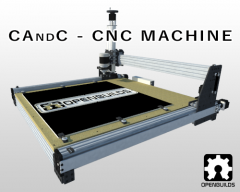OpenBuilds CAndC - CNC Machine
Discussion in 'CNC Mills/Routers' started by CWidt, May 8, 2015.
OpenBuilds CAndC - CNC Machine
Discussion in 'CNC Mills/Routers' started by CWidt, May 8, 2015.
A new derivative of the famous OX CNC, with increases strength, rigidity, and accuracy.
